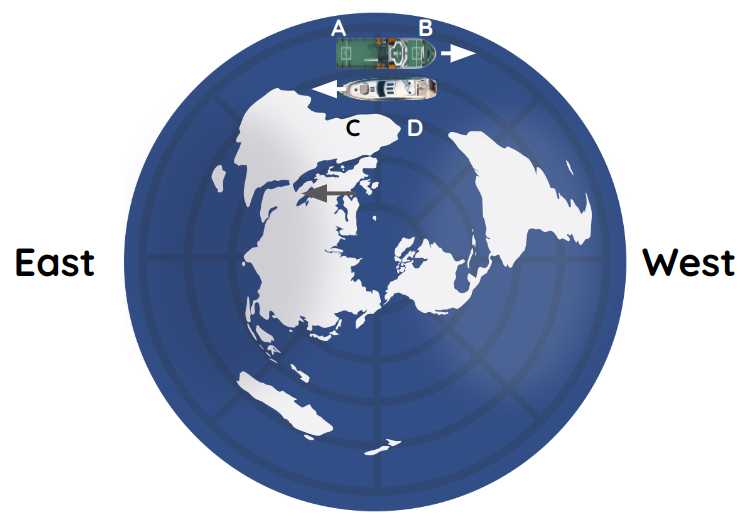Movement and Rest
Table of Contents
26. Effort is both needed for action and rest
People wrongly think that more action is required for motion than for rest.
This is because from a young age, our body is accustomed to be moved by our will.
- We notice our will.
We think that our body is at rest simply because of the gravity of the Earth.
- We do not notice gravity.
Gravity and many other unnoticed causes resist the motions we want to initiate in our limbs. This causes us to tire.
- And so, we think that more force is needed to initiate motion than to stop it because we have mistaken action for the effort that we must exert to move our limbs.
However, we can easily get rid of this prejudice if we think that we need effort to both:
- move external bodies
- stop their motion when they are not stopped by gravity or another cause.
For example, we use the same force to:
- push a ship at rest in still water
- stop it when it is moving
We might experience that less effort is needed to stop the ship than to make it go.
- This is because the weight of the displaced water slows it down.*
Superphysics Note
27. Motion and rest are merely two different modes of a moving body
The mover produces motion just as the stopper stops the motion. We are not talking about either’s action.
Rest is the lack of translation of external action onto the body.
Motion is the translation of external action onto the body.
We are talking about the internal translation which cannot exist outside the moving body.
The body has a different state:
- when it is being transferred
- when it is not being transferred or when it is at rest
In this way, motion and rest are but 2 different modes of the body.
28. Motion only happens when the body is moved from the bodies touching it
Motion occurs from the vicinity of contiguous bodies to the vicinity of others, not from one place to another. This is because the concept of place [spot] varies and depends on our thought.
A body can have only one motion at a time, instead of multiple, if we define motion as the transfer of a body that occurs from the vicinity of contiguous bodies, instead of as a change in location.
This is because at any given moment, a moving body can only be contiguous to one set of bodies at one time.
29. Motion only happens when the bodies contiguous to the moving body are at rest.
This transfer occurs not just between any contiguous bodies, but only those that are perceived as being at rest.
This is because motion is reciprocal.
- The body
ABleaves the vicinity of the bodyCDjust asCDleaves the vicinity ofAB. - As much action is necessary for one as for the other.
This is very different from the common way of regarding motion.
We are on Earth and think of it as being at rest even if its parts move.
30. When 2 contiguous bodies are separated from each other, why is one is said to be moving instead of the other?
This is because motion is that of the body that is moving and not of the entire Earth that it is moving on.
The motion of the body affects the immediate vicinity of the smaller bodies that are contiguous. There are often many such translations, mutually opposed to each other.
Let:
- ship
ABon the Earth’s surface be transferred fromEasttoWest - ship
CDbe transferred fromWesttoEast

The motion of ship AB means that the surface of the earth contiguous to it are transferred from B towards A with the same action that moves AB. But it does not mean that the Earth is also rotating from B to A or from West to the East.
This is because ship CD is moving East, and the Earth’s surface contiguous to it should be moving West which is contradictory.
Thus, here we do not say that the earth is moving, but only the ships AB and CD and similarly for the rest.